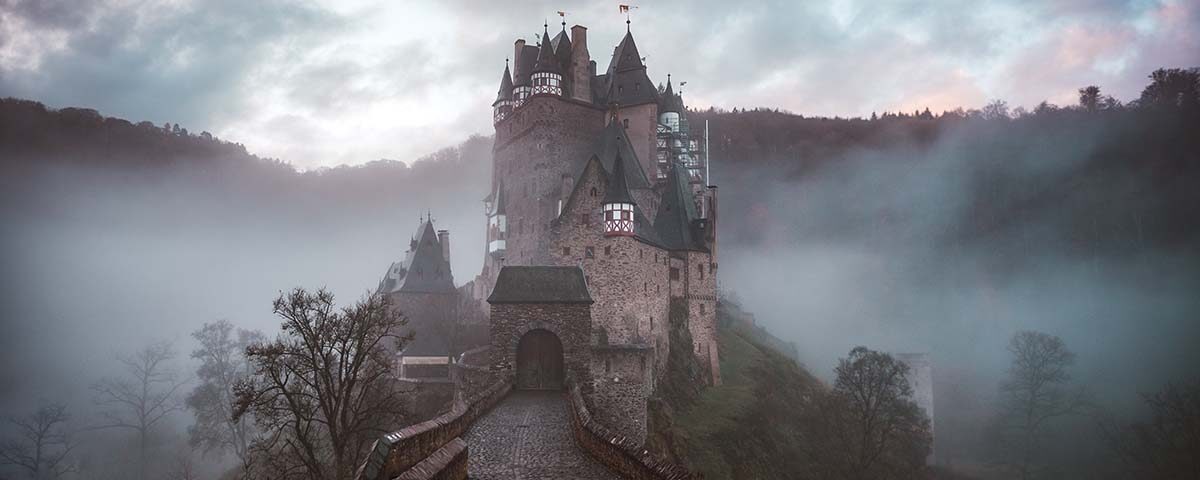
When Jonathan Harker finishes his tour of Count Dracula’s castle, his fascination with the views of endless forests and winding rivers quickly gives way to terror. He finds himself surrounded by high stone walls and locked doors, and there doesn’t seem to be any way out. “The castle is a veritable prison, and I am a prisoner!” the character declares in Bram Stoker’s novel.
The world of literature is full of novels where buildings like Count Dracula’s sinister castle play major roles. Family homes, whether chaotic, haunted, in ruins, or yet to be built, have served as the setting for countless stories and have shaped the destiny of their characters.
Let’s take a look at some books and the best stories that revolve around houses and buildings.
‘We Have Always Lived in the Castle’’ Shirley Jackson
The Blackwood house has been in the family for generations. Its shelves and cupboards are filled with mementos of each and every family member, from pens and ink pots to old jam jars that are stored in the pantry. But today, the house’s activity is just a memory of the past.
Since the incident, the neighbors have been afraid to stop by. Some get close, trying to see what’s going on inside, and the children place bets on who will dare to sneak in. Inside, Merricat, his sister Constance, and their Uncle Julian barricade themselves in, afraid of what may be waiting for them outside and not suspecting that their lives and that of the house are about to change again.
‘One Hundred Years of Solitude,’ Gabriel García Márquez

Many houses in Colombia fit the description of the most famous one in Macondo. Juan Pablo Jou-Valencia (Unsplash)
Shortly after Macondo was founded in a clearing between nowhere and the end of the world, construction on the home of José Arcadio Buendía and Úrsula Iguarán began. This house, “the freshest, most hospitable one there ever was around the swamp,” is filled with new rooms as the family grows and welcomes guests.
The plot of ‘One Hundred Years of Solitude’ evolves alongside the house, where rooms, bathrooms, pens, and even workshops for creating little goldfish are built. García Márquez made it the central axis around which all the magical stories in the novel revolve.
‘Northanger Abbey,’ Jane Austen
When young Catherine Morland travels to Northanger Abbey to visit some friends, her imagination begins to fly at full speed. All the Gothic novels she likes to read are going through her mind, where castles and monasteries are the settings for stories of horror and death. The building becomes an obsession for her, and she becomes convinced that her friends’ home hides a great mystery.
‘Northanger Abbey’ is the first novel that Jane Austen tried to publish. She did not succeed, however, until she had already become a recognized writer. It imitates Gothic novels, where buildings always play an important role.
‘The Hunchback of Notre Dame,’ Victor Hugo

A gargoyle at Notre Dame. Rita Chou (Unsplash)
The story of the hunchback Quasimodo, the gypsy Esmerelda, and Archdeacon Claude Frollo have made a permanent mark on the destiny of Notre Dame Cathedral in Paris. Victor Hugo’s novel centers around the interior and surroundings of the cathedral, with descriptions of its high ceilings, its bell tower, its towers, and its gargoyles. There was a particular reason behind this.
In the pages of the novel, which was published at the beginning of the 19th century, the writer defends Gothic art and sharply criticizes the building’s state of conservation. He feared that, without maintenance, it would end up coming down. The story caught the attention of the French people, sparked a new interest in preserving their artistic heritage, and led to the creation of a movement of historical preservation that made the restoration of Notre Dame a reality.
‘The Glass Room,’ Simon Mawner

Villa Tugendhat, in Brno, the Czech Republic. David McKelvey (Flickr)
A renowned architect receives a different sort of assignment: to design a house that brings light and glass to the fore in Czechoslovakia. This commission becomes Villa Laundauer, his best work. However, the couple who commissioned it cannot enjoy it for long. The rise of Nazism forces them to go into exile, and their home ends up destined for very different purposes than what they had imagined.
This novel fictionalizes the story of the marriage of Tugendhat and Grete Löw-Beer, who commissioned the construction of their house to architect Mies van der Rohe.
‘The Canterville Ghost,’ Oscar Wilde
When the Otis family moves from the United States to England to live in Canterville Castle, its previous owner warns them: Sir Simon’s ghost lives there. This nobleman has been wandering through its corridors and rooms for 300 years, guilty of murdering his wife.
But neither this story nor the ghost’s visits can frighten the family. The castle goes from being a haunted house, typical of Gothic and horror novels, to being the setting for jokes and laughter among the new tenants.
The list of books that revolve around a house or building doesn’t end here. There are others, such as ‘Farewell, Ghosts’ by Nadia Tarranova, the short story ‘House Taken Over’ by Julio Cortazar, and of course, ’Dracula.’
All of them bring stories to life where houses, architecture, and construction determine the life and fate of the characters.
Main image: Cederic Vandenberghe (Unsplash)





There are no comments yet